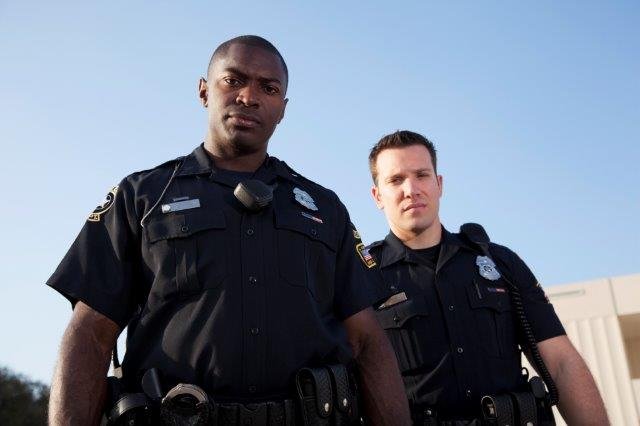Highlights
Cops and others in the justice system believe that reported decreases in crime are wrong. They believe that crime is increasing.
If the Oakland CA police department has just 35 officers on patrol across the city at any given moment, do you really think they want cops to spend time on report writing and crime recording? It’s the same with additional cities that are down hundreds of police officers.
Crimes reported to law enforcement can be instructive and wildly imprecise simultaneously.
Author
Leonard Adam Sipes, Jr.
Former Senior Specialist for Crime Prevention and Statistics for the Department of Justice’s clearinghouse. Former Director of Information Services, National Crime Prevention Council. Former Adjunct Associate Professor of Criminology and Public Affairs-University of Maryland, University College. Former police officer. Retired federal senior spokesperson.
Former advisor to presidential and gubernatorial campaigns. Former advisor to the “McGruff-Take a Bite Out of Crime” national media campaign. Produced successful state anti-crime media campaigns.
Thirty-five years of directing award-winning (50+) public relations for national and state criminal justice agencies. Interviewed thousands of times by every national news outlet, often with a focus on crime statistics and research. Created the first state and federal podcasting series. Produced a unique and emulated style of government proactive public relations.
Certificate of Advanced Study-The Johns Hopkins University.
Author of ”Success With The Media: Everything You Need To Survive Reporters and Your Organization” available at Amazon and additional booksellers.
Sign up for notice of new articles on the front page of this site.
Daily news summations on crime, violent crime, law enforcement, and the justice system are offered under “Google Crime News” in the banner of this website.
A comprehensive overview of crime for recent years is available at Violent and Property Crime Rates In The U.S. It contains links for this article.
The articles cited use modified quotes for brevity.
Article
Nationally, crimes reported to law enforcement decreased modestly since 2021. The exception is homicide; the drops are considerable. Per the Major Cities Chiefs Association, murders increased by 50 percent, so decreases were inevitable.
However, when I offer articles addressing decreases in crime, the pushback from cops and others in the justice system is considerable. Simply stated, they do not believe there are reductions in most forms of reported crime. They (like most Americans per Gallup and other polls) believe that violence is increasing.
Just because there is pushback as to what cops and others believe about crime doesn’t make it true, but they are firsthand witnesses to what’s happening in cities. Per Gallup, police officers are trusted far more than most American institutions. Per Pew, law enforcement is trusted more during emergencies than other institutions.
Relying On Data
I try to be empirically based in my articles. I try to stitch together various research projects from reputable sources and come to reasonable conclusions.
I can offer examples of cities where people claim that crime counts are inaccurate, but individual cases do not mean that it’s happening in all or most jurisdictions.
I can offer data stating that the vast majority of crime is not reported to law enforcement but that doesn’t mean that cities are being disingenuous. There’s always been a huge gap between what’s reported and what occurs, which is why the USDOJ’s National Crime Victimization Survey was introduced over 50 years ago.
The Vast Majority Of Crime Is Not Reported To Law Enforcement
Per the Bureau of Justice Statistics of the US Department of Justice, 42 percent of violent crimes are reported to law enforcement. Thirty-two percent of property crimes are reported to the police.
Twenty-six million Americans were victimized by identity theft in 2016 and only seven percent of victims called the police according to the Bureau of Justice Statistics.
74 percent of violent victimizations against juveniles were not reported to the police per the Office of Juvenile Justice And Delinquency Prevention of the USDOJ.
4,000 police agencies did not participate in crime reporting to the FBI in 2023.
The effort to get law enforcement agencies to fully use the FBI’s new National Incident-Based Reporting System remains a problem.
Murder is down 26 percent in the FBI’s first quarter preliminary-unofficial statistics of 2024 but that’s a reflection that urban homicides increased by 50 percent in the cities measured (2019-2022) per the Major Cities Chiefs Association. Crime statistics cannot grow by those percentages without substantially declining in subsequent years regardless of interventions. It’s always been that way.
Cops are tired of making arrests and not seeing offenders prosecuted or held in jail pretrial, so they don’t.
Arrests and crimes solved have plummeted during recent decades.
Thousands of police officers have left the job and sometimes there are long waits for an officer to arrive at a crime scene and the complainant gives up and disengages. There are multiple reports of cities having hundreds of police officers down from authorized levels. Two US Department of Justice agencies call the lack of cops in cities a crisis.
Crime-ridden Oakland has just 35 officers on patrol across the city at any given moment, the police department has admitted. The admission by the Oakland Police Department came after local news station KTVU asked them how it took cops 48 hours to respond to a July 4 shooting at an apartment complex during which residents reported hearing over 100 gunshots.
When responding to burglar alarms, smaller cities also commonly receive a faster response time, while medium cities “take an average of 40 minutes,” says Don Chon, a professor of criminology at Auburn University in Montgomery, Alabama. In larger cities it could take several hours for police to respond, if they respond at all.
What All This Means
First, this means the overwhelming majority of what we call crime is not reflected in FBI or local crime statistics. There are reasons for not reporting crimes or suspicious activities. That means you would have to have SUBSTANTIAL reductions or increases in crime for the data to be meaningful.
Second, if justice system employees feel that cities are being less than honest as to their crime statistics, some examples provide credibility.
Cities Misrepresenting Crime Data?
Wall Street Journal: Statistics published by the Oakland police department showed year-to-year crime had dropped by 33% overall by the end of April, a dramatic shift after last year’s spike. Mayor Sheng Thao praised the city for turning a corner. Gov. Gavin Newsom quoted the 33% figure in a news release touting Oakland’s partnership with the California Highway Patrol. The news spread through social media posts and optimistic headlines, including stories in the Chronicle.
But a new Chronicle review of Oakland police data finds that the city overstated the improvements actually seen on the streets. More troubling, the analysis found a persistent problem in the Citywide Weekly Crime Reports published by Oakland police, which compare incomplete year-to-date figures from the current year to complete year-to-date figures from past years.
A similar story is in the UK’s Daily Mail.
Wichita Eagle: WPD (Wichita Police Department) requested the KBI (Kansas Bureau of Investigation) let it amend its 2022 crime data after an Eagle report found discrepancies in the data police reported compared to crime data the KBI and FBI had for Wichita.
New York Times: In other words, the evidence is telling us that South Bend didn’t become more violent; it simply changed how it counted assaults.
Jersey City Times: In a December press conference, Mayor Fulop and Director of Public Safety James Shea brought out charts and made statements suggesting that violent crime in Jersey City had gone down. A press release from the mayor spoke of “historic decreases in violent crime…for 2023.” Within hours, several news organizations were reporting the story. The problem was, the story wasn’t true. Violent crime was, in fact, up.
Vital City Addressing New York City: In the end, what remains indisputable is that the city’s crime picture is both significantly worse than it was in 2019 and, by some measures, better than it was in 2020 and 2021. The failure to do the work of introducing this particular bit of nuance into the mainstream conversation about crime in New York may explain why public sentiment in the city last summer did not seem to reflect the declines in certain crime categories.
See Jeff Asher’s analysis of Greenwood, SC’s reporting on homicides.
These are recent examples. Going further back in time would produce many more.
Lessons?
The lessons? What I hear from cops about crime in “some” cities is that if there are decreases, it’s not because there is less crime. It’s because fewer crimes are being reported or recorded for a variety of reasons. Many insist that violence has increased.
Again, Gallup and other polls indicate a considerable amount of concern from citizens about crime and violence. It’s a top election priority. Are they all wrong about crime? There are dozens of mainstream articles suggesting that Americans are delusional (or silly) when it comes to lawlessness.
Is There Data Stating That Crime Increased?
There are two types of crime reports from the US Department of Justice, official full-year data and preliminary FBI statistics which may (and probably will) include different numbers when full-year official reports are released.
The National Crime Victimization Survey from the Bureau of Justice Statistics of the US Department of Justice in an “official” 2023 report states that violent crime increased 44 percent (per analyst Jeff Asher and The Marshall Project) with large increases in violence for groups for 2022.
A 44 percent increase in violence would be the largest ever recorded.
There has never been an increase in violent crime of this magnitude. A companion report on juvenile crime also offers data on greatly expanded violence. Both use a polling methodology similar to the US Census.
You can debate the worthiness of preliminary-unofficial statistics from the FBI (for 2023 and 2024) but the NCVS reports cited above are the most recent official studies on crime from the US Department of Justice. Official FBI reports based on reported crimes will be released this fall.
Conclusions
When I was 15, my friends and I attended a party with lots of liquor. I volunteered to drive my friend’s car (I didn’t have a license) and abstain. We ran out of gas and friends went behind a house and stole a gas can and, conveniently, a case of beer.
We were stopped by the police who took me home to the custody of my parents who swore that they would make my life a living hell for my stupidity. I wasn’t arrested and no report was filed. When I became a police officer, I remembered the incident and did the same when appropriate.
When I left law enforcement and attended college, my professors addressed the dismal nature of crime reporting citing Chicago and other cities with histories of “cooking the books” as to reported crimes. According to them, reported crime data beyond homicides should be treated with extreme caution.
Can I make a blanket statement that many or most cities are “cooking the books” as to crime statistics? No.
Can I suggest that 90 percent of responses to my articles from cops and others involve cities “cooking the books” on crime? Yes, but without hard data, it proves nothing.
But I understand that cops (and everyone else in the system) have tremendous discretion. There are thousands of times when we do not initiate official proceedings through a report or arrest. Did crimes occur? Yes. Are they all recorded? No.
Do cities discourage crime reporting? You don’t have to create a memo to depress reports. Cops and others know that they have the discretion not to take reports for many incidents; it’s not discouraged. The city’s image profits from not recording crime “and” you keep officers available for major calls that demand a prompt response. Nonreporting becomes a win-win situation.
If the Oakland CA police department has just 35 officers on patrol across the city at any given moment, do you really think they want cops to spend time on report writing? Then understand that many cities are operating with hundreds of police officers below authorized levels. Do they have time to write reports and record crimes? Probably not. In Philadelphia, the city remains short more than 1,100 officers after many resigned or retired.
Then there are definitions. Are five burly guys approaching you saying “We need thirty dollars” a robbery or a solicitation? When we stole gas and beer as teenagers, was it a breaking and entering? Technically, it was. Two friends get drunk and one insults another’s wife and one throws a beer bottle. Is it an aggravated assault or a stupid act among friends?
Thus the murky world of crime reporting will forever remain the murky world of crime reporting. FBI statistics are good for general trends, nothing more. A five percent increase or decrease in violence is almost meaningless. Unless there is a double-digit yearly increase or decrease, crimes reported to law enforcement can be instructive and wildly imprecise at the same time.
So when cops or others express doubt about the veracity of reported crime statistics, my self-kept response is “no sh__.” But until the Bureau of Justice Statistics offers local and state crime statistics via the National Crime Victimization Survey (which they are experimenting with), crimes reported to law enforcement, as inaccurate as they may be, are currently the only game in town.
It’s a matter of interpreting crime statistics correctly which will require a massive Artificial Intelligence effort.
Yes, most people and the media simply want to know if crime went up or down; they’re not interested in the nuances unless someone challenges the counts. But we all know that what’s reported and what happens are two different things.
Privacy Policy
We do not collect your personal information. See our privacy policy at “About This Site.”
See More
See more articles on crime and justice at Crime in America.
Most Dangerous Cities/States/Countries at Most Dangerous Cities.
US Crime Rates at Nationwide Crime Rates.
National Offender Recidivism Rates at Offender Recidivism.
The Crime in America.Net RSS feed (https://crimeinamerica.net/?feed=rss2) provides subscribers with a means to stay informed about the latest news, publications, and other announcements from the site.













Leave a Reply